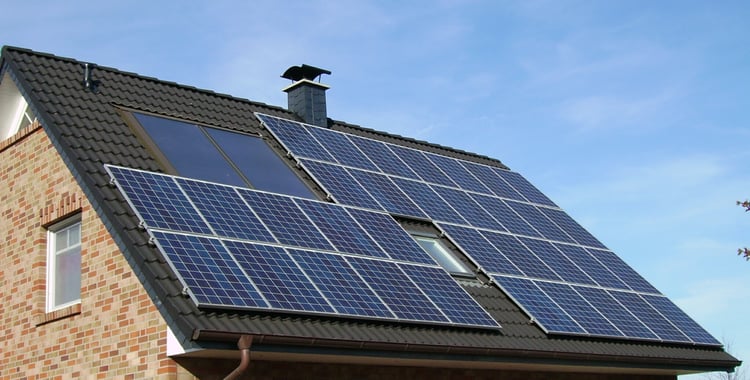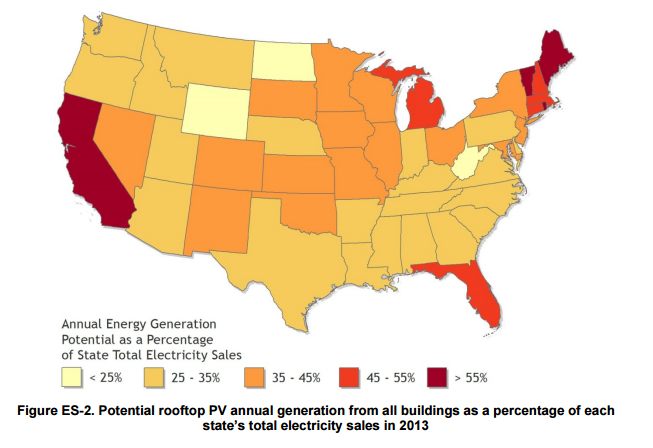
A new report has come out by the National Renewable Energy Laboratory (NREL) regarding an exciting future of solar. The study figured out that if all suitable roofs in the United States had solar panels, they would generate 1,118 gigawatts of solar power, about 40% of the power that Americans consume every year.
To put that number into perspective, residential and commercial sectors use about 40% of all the energy produced in the United States. If PV solar panels were installed, the amount of resources, time, and services needed to keep up with that manufacturing could be directed elsewhere.
Still Not Impressed?
If that still doesn’t seem like a lot, think about this: the study only estimates the solar power potential of existing and suitable rooftops. People don’t just live in houses. They also live in apartments, tower blocks, and condominiums. One available roof over many heads. And that’s just if the roof is suitable for PV panels.
What’s even more exciting is that the study doesn’t take into account ground-mounted or floating photovoltaics. There’s an immense potential building towards solar panels that are not just mounted to someone’s roof, describes NREL senior energy analyst Robert Margolis in a recent press release. “Actual generation from PV in urban areas could exceed these estimates by installing systems on less suitable roof space, by mounting PV on canopies over spaces such as parking lots, or by integrating PV into building facades.”
The statement is reminiscent of the same NREL study done back in 2008. Back then, the NREL estimated that U.S. rooftop solar potential would be at 664 GW, almost half of what was predicted in the most current study. As PV panels constantly improve and become more efficient, it’s not crazy to expect that maybe the 1,118 GW number of this study might be doubled in another 8 years.
How’d They Do It, Though?
Over the course of 3 years, the team at NREL used light detection and ranging (LIDAR) data and geographic information system (GIS) methods to map the topography of 128 cities around the United States. They then figured out the roof productivity of those areas down to the square meter. Utilizing that data, they simulated the productivity of the panels on those roof areas to estimate total rooftop solar potential, and finalized the study by extrapolating the data to the whole country.
The report ranks cities and states with the highest capability to meet energy consumption using potential solar power capacity. California tops the list with the capability of producing 74% of the energy currently sold by its utilities.

Florida comes in at 47%, in stark difference to other South Atlantic states (who are estimated to make 23-35% of solar energy). This is not because of excess roof availability or above-average solar resources, but because of variables that affect technical potential in the study. Florida has a significantly below-average electricity consumption rate outside of the residential sector, resulting in lower sales of electricity than the national average. Because of these factors, solar can make a much larger and immediate difference in Florida than the other South Atlantic states.
In fact, Florida, and the other states with the highest potential to offset electricity use, all have significantly below-average household energy consumption rates. With a statistic like that, it’d be easy for those states to make the most out of solar incentives by prioritizing solar energy.
Interested in making the most out of solar incentives for yourself? Call one of our Energy Specialists at 407.331.9077 or contact us today. You’ll be surprised at the monetary motivation that’s offered to make the switch to solar.
